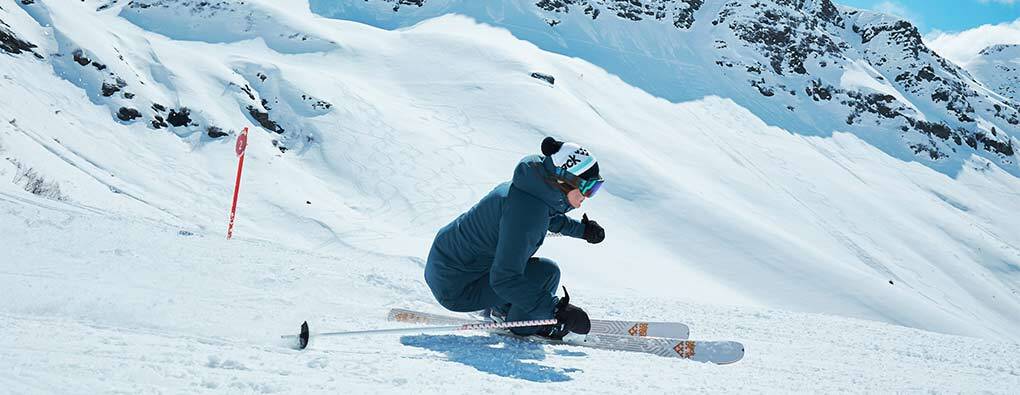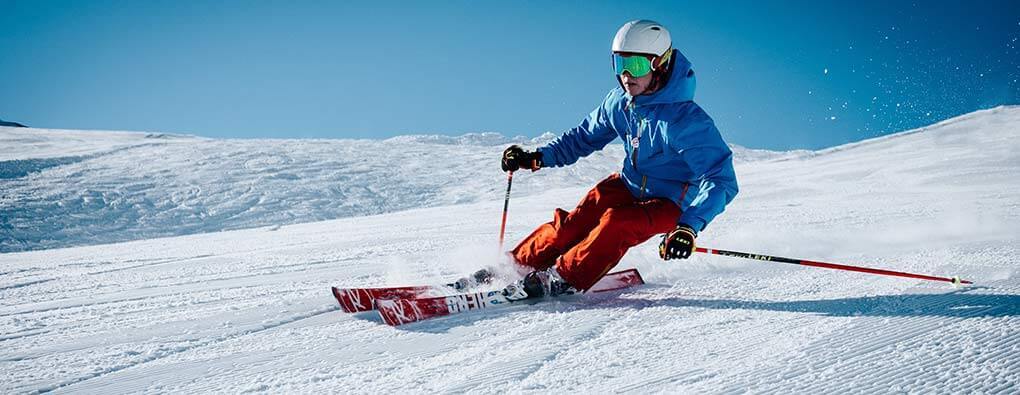Buying Skis for Beginners
For those new to skiing who are prepared to buy their first skis, this guide will assist you in navigating the options. We will simplify the process, helping you determine the best type, suitable length, and additional insights on ski width.
Before making your final choice, it's vital to explore skis that match your beginner skill level. This ensures you opt for skis that provide ease of use and forgiveness. Beginner skis also incorporate bindings that are adjustable for size and easy to utilise.
Owning your skis offers the chance to become accustomed to their unique feel and reactions, which can be highlighted as a significant benefit compared to hiring them.
PISTE SKIS - Outstanding Carving Skis for Groomed Trails
True to their designation, these skis are crafted for on-piste use. For novice skiers, who spend their time mastering the basics on the piste, Piste skis are ideal. Even once the basics are no longer a challenge, Piste skis can help you advance further. Typically narrow in width, they offer excellent snow grip.
ALL MOUNTAIN SKIS - Top All-purpose Skis

These adaptable skis accommodate various conditions. Perfect for on-piste skiing, they also perform well off-piste. If you've skied a few times and want something versatile, All Mountain skis might be your answer. Designed with medium to narrow widths, they balance firm snow grip on-piste with the ability to handle softer, uneven snow off-piste.
Buy Your All Mountain Skis Here
SPECIALISED SKIS
There are also specialised skis tailored for Park, Racing, Freeride, and Touring, generally suited for those with more experience. If this interests you, our guide on Purchasing Skis for Experienced Skiers delves deeper into these options.
Selecting the Proper Ski Length
When deciding on ski length, your height and skill level are key. As a novice, you should choose skis near the height of your nose. Each model is available in several lengths, so select one closest to your recommended measurement. A deviation of 3 cm longer or shorter is acceptable.
The size chart suggests that inexperienced skiers benefit from shorter skis, as they offer better control during the learning phase.
Your weight is another factor in size selection. If you are significantly lighter or heavier than average, consider this when choosing your ski length—longer skis suit heavier individuals, while lighter skiers should opt for shorter lengths.
The illustration shows the ski length suitable for a novice skier
| All Mountain/Piste Skis | |
| First-timer | your height -20 cm |
| Beginner | your height -15 cm |
| Intermediate | your height -10 cm |
| Advanced | your height -5 cm |
| Expert | your height |
Ski Width
Ski width is indicative of how well they manage various terrains. Generally, narrow skis are suited for hard snow, while wider skis are better for softer conditions. The width is expressed in three numbers indicating the measurements of the tip, waist, and tail.
The waist measurement, located in the middle, is most informative. For instance: 132/78/113
This data is available on our website under each ski's specifications.
Waist widths ranging from 70 to 82mm are ideal for those spending most of their time on piste, designed to grip hard snow efficiently, making them perfect for novices.
Additional Ski Gear
Ski Boots
Arguably, ski boots are the most crucial equipment for a ski trip. Our Guide to Buying Ski Boots contains detailed information, but here’s a brief introduction.
Ski boot sizes, in centimetres, represent the full foot length. Measure your feet accurately to find your size, and consider the flex value of the boots, which indicates shell flexibility. Beginners should look for easily flexible boots (Flex 60-90) for comfort. More on the recommended boot flex can be found in the Boot Flex Guide.
Tip: Experiencing discomfort with your ski boots? Ensure your ski trousers are not tucked inside the boots. Only your foot and long ski sock should be in the boot. Quality ski socks can prevent soreness, blisters, and cold feet.
Ski Poles
Ski poles aid forward movement on flat surfaces and improve balance. At the lower part, there is typically a round plastic disc, stopping the pole from sinking too far into the snow. Use the Ski Pole Length Size Chart to ascertain the suitable pole length based on your height.
Helmets
Unlike 20 years ago, the majority of skiers, regardless of skill level, wear helmets today. They not only keep you warm but are crucial for your safety.
Ski helmets are engineered for durability and protection from repeated impacts. Unlike other types such as bike or skate helmets, they are purpose-built for skiing.
You might find it beneficial to learn more in our resources on Wearing Your Helmet Properly and the Helmet Lifespan.
Goggles
Goggles are essential for a pleasurable ski experience. They shield your eyes from intense sunlight, strong winds, and snow, while enhancing visibility. Our comprehensive guide, The Ultimate Guide to Ski and Snowboard Goggles, offers further insights.



